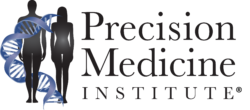Human Cell Atlas announces milestones reached in its massive endeavor to map every single cell in the human body
Seven years in to an ambitious worldwide human cell mapping project, known as the Human Cell Atlas, organizers have announced the publication of four key papers they say signal progress toward a comprehensive cell reference set. Continued advancements could not only lead to new clinical laboratory and pathology testing but inform in-vitro cell engineering and regenerative medicine research.
Wellcome Sanger Institute in the UK, US-based Broad Institute of MIT and Harvard, and The Chan Zuckerberg Biohub are among an international consortium of collaborators that “have created highly detailed maps of more than a million individual cells across 33 organs and systems across the human body.” The May 2022 announcement from Human Cell Atlas explains the development of four new complementary multi-tissue cell atlases, according to a news release.
Human Cell Atlas: Four Areas of Advancement Noted in 2022
According to information published in Science, from a sampling of collaborators and researchers, the four cell atlases which will contribute to the complete Human Cell Atlas were developed as a result of:
1. Sequencing RNA from 330,000 single immune cells from across the adult body to understand the function of immune cells in different tissues (toward understanding of how human immunity functions as an integrated, cross-tissue network).
2. Characterizing the developing immune system across multiple organs through single-cell RNA sequencing (scRNA-seq) and using cross-gestation analysis (an “expansive view of immunity’s start” after conception).
3. Using coordinated single-cell transcriptome sequencing to measure the messenger RNA molecules of nearly 500,000 cells from 24 tissues and organs from a single donor (discovering organ-specific differences across more than 400 cell types).
4. Using frozen, archived tissue to generate single-nucleus RNA sequencing (snRNA-seq) profiles from eight tissue types across 16 individuals (toward understanding disease gene function).
“Our single-nucleus Human Cell Atlas study demonstrates a powerful large-scale way to analyse cells from frozen tissue samples across the body with deep-learning computational advances, and opens the way to studies of tissues from entire patient cohorts at the single cell level,” stated Aviv Regev, PhD, a Massachusetts Institute of Technology (MIT) professor and co-chair of the Human Cell Atlas. “We were able to create a new roadmap for multiple diseases….”
All of this work is groundbreaking in that cells are the basic building blocks of life. Through this research, scientists eventually hope to systematically relate disease-associated variants to cells and molecular processes. The problem is that scientists don’t know how many different types of cells there are. To gain full perspective of cell types and characteristics over time could have a profound effect on disease prevention and treatment.

Cell Maps Key to Precision Medicine Technology and Treatments?
A typical human body contains about 37.2 trillion cells. If cell maps are the key for precision medicine technologies and treatments, the eventual master map of every cell in the human body could identify when, where, and how cells vary from expected locations or functions.
“A detailed understanding of cells through the Human Cell Atlas will help explain many aspects of human health and disease,” said Sarah Teichmann, PhD, co-chair of the Human Cell Atlas Organising Committee and the Head of Cellular Genetics at the Wellcome Sanger Institute.
“Our openly available data will contribute to the Human Cell Atlas and could serve as a framework for designing vaccines, or to improve the design of immune therapies to attack cancers,” added Teichmann.
Beyond the Genome
The Human Cell Atlas has been described as analogous to the Human Genome Project that resulted in an understanding of the entire human genome. Instead of sequencing DNA, however, the Human Cell Atlas relies largely on RNA in the mapping of every cell and in describing where each type of cells are located, how they interact with other cells, and how cells develop and change over the human lifespan.
The themes that emerged from the May 2022 Human Cell Atlas announcement show a deeper understanding of human cell types and characteristics. One author cohort suggested potential for an atlas of the developing human immune system to facilitate in vitro cell engineering and regenerative medicine research. (See “Mapping the Developing Human Immune System Across Organs.”)
For years researchers have been working toward subsets of tissues and specific areas in the body: a human cardiac cell atlas, human liver cell atlas, a single-cell atlas of the normal and malformed human brain vasculature, and human cell atlas of fetal gene expression, among others.
A recent retinal cell map, created by researchers from the National Eye Institute and unaffiliated with the Human Cell Atlas Consortium, was able to provide new insights into the structure and function of the retina.
“The findings will help us develop more precise cell and gene therapies for specific degenerative eye diseases,” said Kapil Bharti, PhD, the study’s lead investigator, in a National Institutes of Health (NIH) press release.
Evolution of Technologies Makes It Possible
Single-cell atlas studies in and apart from the Human Cell Atlas Consortium are worth watching for the rapid evolution of technologies that probe cells and tissues, and analyze the data. In addition, cell maps could begin to influence preventive care and therapeutic strategies in different patient populations, as well as facilitate in vitro cell engineering and regenerative medicine research.
“Openly available, the atlases allow researchers to compare specific cell types across the body in fine detail, revealing novel cell functions and shedding light on health and disease,” states the Human Cell Atlas website.
However, this is a massive project of many different facets. As a wide range of researchers wrote in 2019 in relation to making their case for a pediatric cell atlas, cell types and their molecular states contributing to tissue growth are subject to different signaling, transcriptional, and epigenetic factors throughout life. The underpinnings of significant differences in cell populations between pediatric and adult tissues, for example, are unclear. More details about children’s hospitals involved with the pediatric-specific cell atlas can be found on Human Cell Atlas website. These hospitals include Boston Children’s Hospital (BCH), Cincinnati Children’s Medical Center (CCHMC), Beatrix Children’s Hospital, Children’s National Medical Center, and The Children’s Hospital of Philadelphia (CHOP).
All of these works in progress will offer an invaluable resource for precision medicine technologies and treatments eventually. The Human Cell Atlas may still be in its early days, but even now, these insights could change how precision medicine advances emerge.
—Caleb Williams
Related Information:
Multi-tissue Cell Atlases Lead to Leap of Understanding of Immunity and Disease
Single-Nucleus Cross-Tissue Molecular Reference Maps Toward Understanding Disease Gene Function
The Tabula Sapiens: A Multiple-Organ, Single-Cell Transcriptomic Atlas of Humans
Mapping The Developing Human Immune System Across Organs
Retinal Cell Map Could Advance Precise Therapies for Blinding Diseases
The Pediatric Cell Atlas: Defining the Growth Phase of Human Development at Single-Cell Resolution
